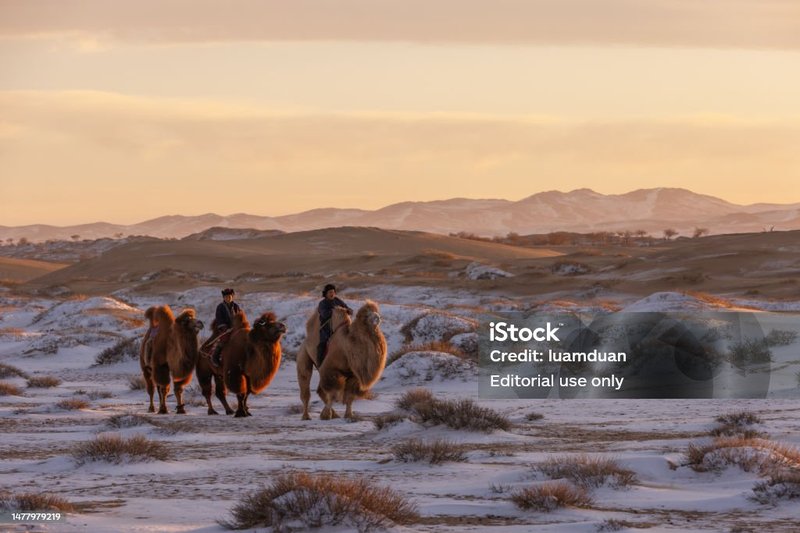
These camels have been around for thousands of years, particularly thriving in the cold deserts of Central Asia. They’re not just another exotic animal; they play a crucial role in their ecosystem and in the lives of people who inhabit their native regions. So, let’s take a moment to unpack some of the most common myths and misconceptions about Bactrians. Trust me, you’ll come away with a clearer picture—and maybe a newfound appreciation for these remarkable creatures.
Bactrians Are Just Like Dromedaries
One of the biggest myths about the Bactrian camel is that it’s just a variant of the dromedary camel, which has only one hump. Honestly, while they both belong to the camel family, they’re distinctly different.
Bactrians are built to withstand harsher climates. They have two humps that store fat, which helps them survive in cold desert conditions and gives them a unique ability to thrive where temperatures can plummet. In contrast, dromedaries, with their single hump, are more suited to hot, arid environments. Imagine trying to wear winter gear in a tropical climate; that’s what it would be like to expect a Bactrian to function like a dromedary!
In addition, their body shapes differ. Bactrians are stockier and have thicker fur, while dromedaries are leaner and require less insulation. Understanding these differences clarifies why Bactrians are often considered a more robust type of camel.
Bactrian Camels Are Only Found in Deserts
Another common misconception is that Bactrian camels only inhabit sandy deserts. While they are indeed found in the deserts of Mongolia and surrounding regions, they also thrive in various environments, from grasslands to rocky mountains.
Let me explain. The Bactrian camel is incredibly adaptable. In fact, their ability to withstand cold and harsh weather is what sets them apart. They can tolerate temperatures that swing between freezing and scorching heat—definitely impressive, right? So, next time you picture them, imagine rolling hills or even snow-covered terrain, not just sand dunes.
Furthermore, their habitat isn’t limited to remote areas. Bactrians are integral to the pastoral life of local communities. They’re used for transportation, milk production, and wool, especially in areas where other livestock may not survive.
Bactrians Are Aggressive Creatures
You might be wondering if Bactrian camels are as aggressive as their reputation suggests. The truth is, while they can display stubbornness (like a teenager ignoring their chores), they aren’t inherently aggressive.
Most Bactrians are gentle and even social animals. Historically, they’ve formed strong bonds with humans, especially in nomadic cultures. Just like any other animal, their behavior greatly depends on their upbringing and environment. If raised in a nurturing setting, they’re often quite docile and friendly—much like a well-loved dog.
However, it’s worth noting that Bactrians can become defensive if they feel threatened, especially around their young or during mating seasons. It’s important to respect their space, just as you would with any wild animal.
The Two Humps of a Bactrian Are Always Full
One of the most enduring myths is that a Bactrian’s humps are always filled to the brim with fat. While it’s true that these humps store fat for energy during times of food scarcity, they can appear quite empty depending on the camel’s diet and health.
Think of their humps like a backpack: if they’re well-fed, the pack is full, but if they’re running low on supplies, it might look pretty flat. During harsh winters when food is scarce, Bactrians rely heavily on their fat reserves, causing their humps to shrink. But don’t worry, once they have enough food, those humps can plump back up.
The humps are also a great indicator of their health; a well-nourished Bactrian will have firm and rounded humps, while a malnourished one will have them droopy and deflated. So, those humps are not just for show; they tell a story of the camel’s well-being.
Bactrian Camels Are Rare and Endangered
While Bactrians are less common than dromedaries, it’s a bit of a stretch to say they’re endangered. In fact, they are *considered domesticated* and are quite numerous in regions where they are raised for work and food.
However, many people do fear for their existence due to habitat loss and declining traditional lifestyles. There’s a delicate balance here. Bactrian populations have felt pressure from modern farming practices and climate change, which can reduce their natural habitats. Yet, in controlled environments and farms, their numbers remain stable.
In a way, it’s like watching a classic car that needs good care. If we focus on maintaining their habitats and the cultures that support them, Bactrians could continue to thrive, much like classic cars in a well-kept garage.
Bactrians Don’t Require Much Care
A common myth is that Bactrian camels are low-maintenance animals. While they are hardy, that doesn’t mean they’re easy to care for! Like any living creature, they need attention, proper feeding, regular health checks, and a safe living environment.
Imagine you have a pet that can survive on its own, but that doesn’t mean you wouldn’t give it love and care. Bactrians need to be fed a balanced diet and have access to water, especially since they can drink a lot when thirsty. Regular grooming is also essential to keep their coats healthy and their skin free from irritations.
Those who work with Bactrians often highlight the bond that forms through care and attention. When treated well, these camels can become loyal companions, just like any pet—rather than just a working animal.
Bactrian camels are often misunderstood, and it’s easy to fall prey to myths about them. From their unique adaptations for surviving harsh climates to their gentle nature, these camels are more than just a fascinating part of Central Asia’s landscape—they’re a vital part of the cultures that surround them.
Next time you hear someone talk about Bactrians, you can jump in and share your newfound knowledge! By breaking down these common myths, we can better appreciate these remarkable animals and the important roles they play in our world. So here’s to the Bactrian camel—may it continue to thrive and charm people for generations to come!

